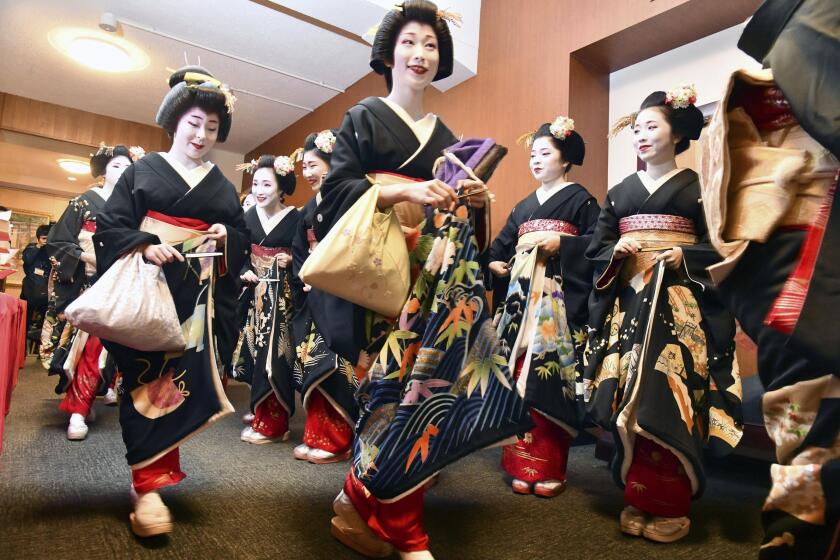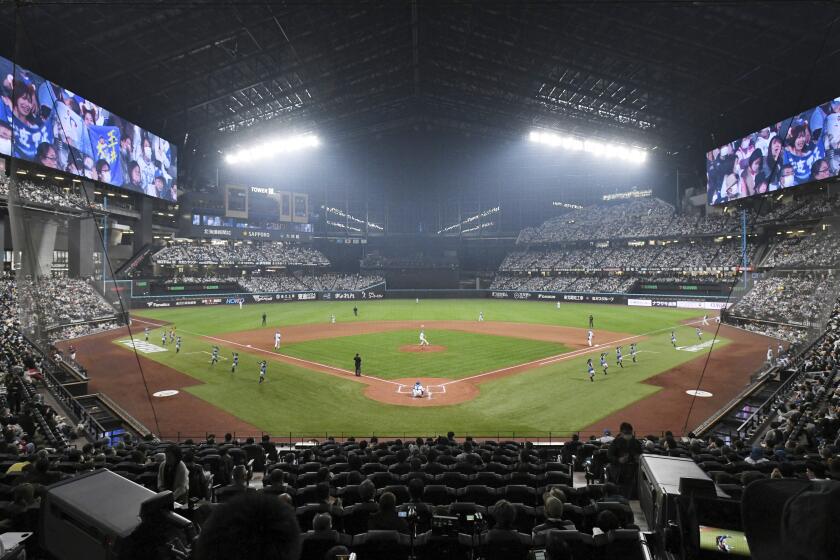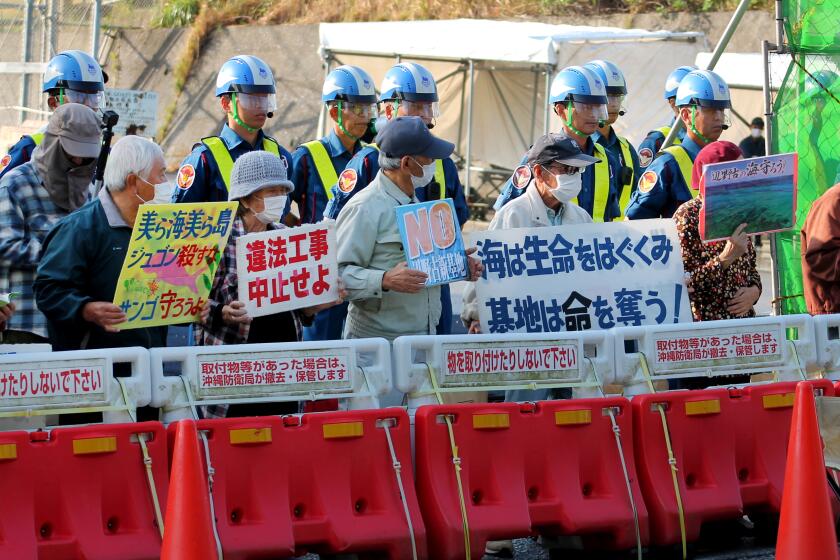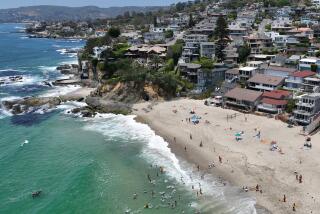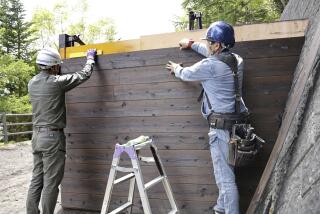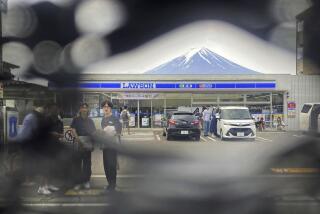To deter tourists, a town in Japan is building a big screen blocking the view of Mt. Fuji
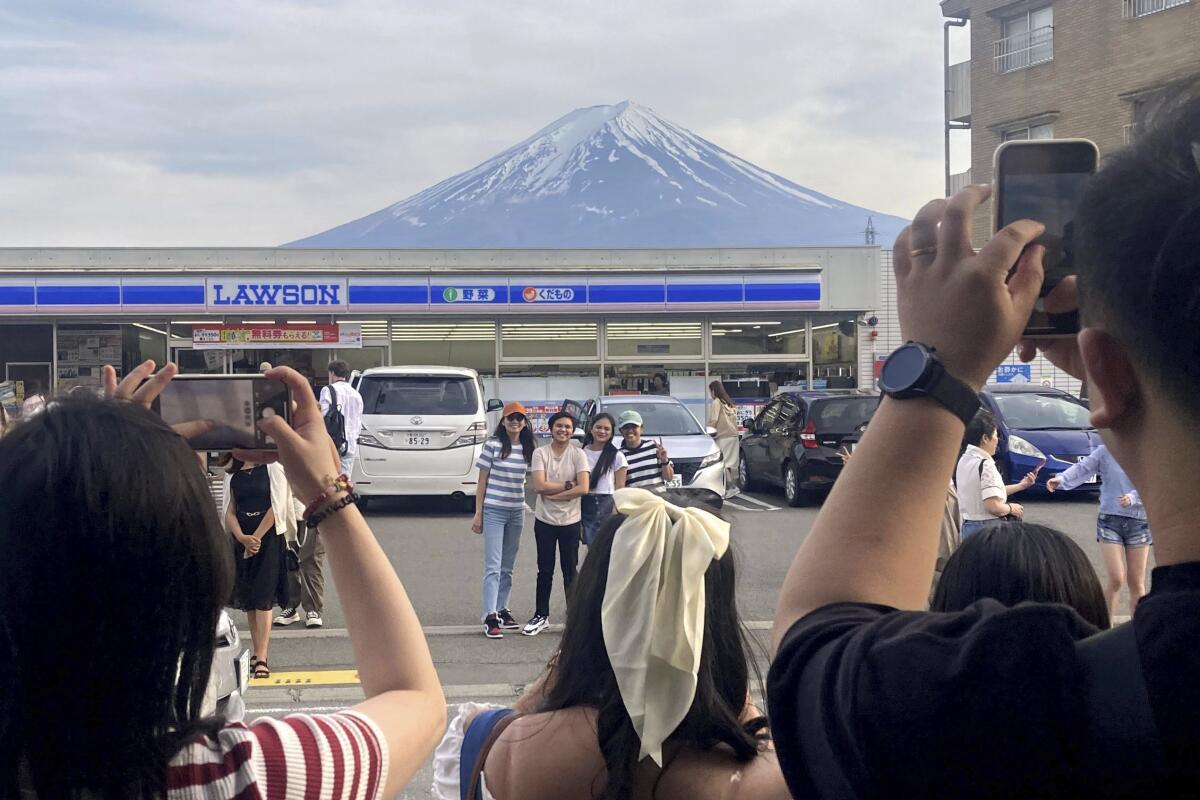
FUJIKAWAGUCHIKO, Japan â The town of Fujikawaguchiko has had enough of tourists.
Known for a number of scenic photo spots that offer a near-perfect shot of Japanâs iconic Mt. Fuji, the town on Tuesday began constructing a large black screen on a stretch of a sidewalk to block the view of the mountain. The reason: misbehaving foreign tourists.
Fujikawaguchiko âis a town built on tourism, and I welcome many visitors, and the town welcomes them too, but there are many things about their manners that are worrying,â said Michie Motomochi, owner of a cafe serving Japanese ohagi sweets near the soon-to-be-blocked photo spot.
Motomochi mentioned littering, crossing the road with busy traffic, ignoring traffic lights and trespassing onto private properties. She isnât unhappy though â 80% of her customers are foreign visitors whose numbers have surged after a COVID-19 pandemic hiatus that kept Japan closed for about two years.
Her neighborhood suddenly became a popular spot about two years ago, apparently after a photo taken at a particular angle showing Mt. Fuji in the background â as if sitting atop a local convenience store â became a social media sensation known as âMt. Fuji Lawson,â town officials say.
Signs in both Japanese and English will warn tourists to keep out of certain areas in Kyotoâs geisha district, labeling them as private.
The mostly foreign tourists have since crowded the small area, triggering a wave of concerns and complaints from residents about visitors blocking the narrow sidewalk, taking photos on the busy road or walking onto peopleâs properties, officials said.
In Europe, concerns over tourists overcrowding historic cities led Venice last week to launch a pilot program to charge day-trippers a 5-euro ($5.35) entry fee. Authorities hope it will discourage visitors from arriving on peak days and make the city more livable for its dwindling residents.
Fujikawaguchiko has tried other methods: signs in English, Chinese, Thai and Korean urging visitors not to run into the road and to use the designated crosswalk, and even hiring a security guard to help ensure crowd control. None worked.
The black mesh net, when completed in mid-May, will be 8.2 feet high and 65.6 feet long, and will almost completely block the view of Mt. Fuji, officials said.
Dozens of tourists gathered Tuesday taking photos even though Mt. Fuji was not in sight due to cloudy weather.
The Dodgers could have an opportunity to bring Shohei Ohtani back to Hokkaido for the first time since he left the Fighters more than six years ago.
Anthony Hok, from France, thought the screen was an overreaction. âToo big solution for subject not as big, even if tourists are making trouble. Doesnât look right to me,â he said. The 26-year-old suggested setting up road barriers for safety instead of blocking the view for pictures.
But Helen Pull, a 34-year-old visitor from the United Kingdom, was sympathetic to the local concern. While traveling in Japan in the last few weeks, she has seen tourism âreally ramped up here in Japan from what weâve seen.â
âI can see why people who live and work here might want to do something about that,â she said, noting that many were taking pictures even when the mountain was not visible. âThatâs the power of the social media.â
Foreign visitors have flocked to Japan since the pandemic border restrictions were lifted, partly due to the weaker yen.
Last year, Japan had more than 25 million visitors, and the number this year is expected to surpass nearly 32 million, a record from 2019, according to the Japan National Tourism Organization. And the government wants more tourists.
Growing concerns over war with China have Japanâs southwestern islands scrambling to bolster defenses.
Although booming tourism has helped the industry, it has triggered complaints from residents in popular tourist destinations, such as Kyoto and Kamakura. In Kyoto, a famous geisha district recently decided to close some private-property alleys.
Locals are uncertain about what to do.
Motomochi said she cannot imagine how the black screen can help control the flow of people on the narrow pedestrian walk and the road next to it.
Yoshihiko Ogawa, who runs a half-century-old rice shop in the Fujikawaguchiko area, said the overcrowding has worsened in the last few months, with tourists gathering as early as 4 a.m. and talking loudly. He sometimes struggles to get his car in and out of his garage.
âWeâve never thought weâd face a situation like this,â Ogawa said, adding that he is unsure what the solution might be. âI suppose we all just need to get used to it.â
McGill and Yamaguchi write for the Associated Press. Yamaguchi reported from Tokyo.
More to Read
Sign up for Essential California
The most important California stories and recommendations in your inbox every morning.
You may occasionally receive promotional content from the Los Angeles Times.
